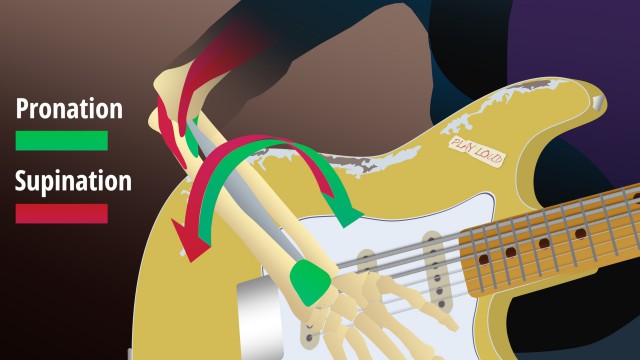Motion Mechanics
A motion mechanic is the joint or combination of joints you use to generate the picking motion itself.
Despite the seemingly endless variety of ways you can physically move a pick, the most common approaches actually fall into a few simple categories. We’ve already taken a good closeup look at them in our investigation of escape motion and pickslanting.
Different joints generate different types of escape motion. So for example, the elbow only does DSX motion when operating by itself, while the forearm mainly does USX. And even beyond that, these joints generate motion paths with unique shapes, which helps us understand which physical mechanic is being used even if we can’t clearly see how the arm or hand is moving.
In this section, we’ll take an in-depth look at how these important joints function. We’ll also provide some tips for learning to recognize them when you’re using them. This isn’t as simple as you might think!


